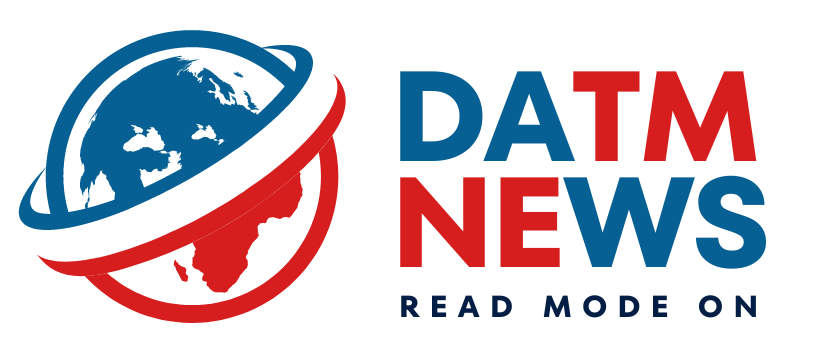When Did Sweden Join NATO?
Sweden joins NATO on March 7, 2024. Sweden officially became the 32nd member of the North Atlantic Treaty Organization (NATO), marking a historic shift in the nation’s security posture. This decision, driven by a dramatically altered security landscape in Europe, ended over 200 years of Swedish military non-alignment.
Sweden is now a NATO member. #StrongerTogether #WeAreNATO pic.twitter.com/DGShAjI96I
— Swedish Ministry for Foreign Affairs (@SweMFA) March 8, 2024
Understanding why Sweden joined NATO requires delving into the complex interplay of historical neutrality, the rise of a resurgent Russia, and the evolving security threats of the 21st century.
A Tradition of Neutrality
Sweden’s neutrality can be traced back to the 1812 Treaty of Örebro, which formally ended its long involvement in European wars. This policy aimed to preserve peace and allow Sweden to focus on economic development. Throughout the 19th and 20th centuries, Sweden maintained this strategy, even during the two World Wars. While it did cooperate with the Allied powers during World War II, it avoided direct military involvement.
The Cold War further solidified Swedish neutrality. Though not a member of the Warsaw Pact, Sweden remained wary of the Soviet Union and maintained a strong national defense. It developed a sophisticated air force and navy, capable of defending its territory in the event of an attack.
The Ukraine Crisis and a Turning Point
The fragile balance of European security was shattered in February 2022 with Russia’s full-scale invasion of Ukraine. This event sent shockwaves through Sweden and its neighbor Finland, another traditionally neutral nation. The brutality of the war and the perceived threat of a more aggressive Russia significantly altered public opinion in both countries.
Sweden, long accustomed to peace, witnessed a dramatic shift in its security calculus. Polls showed a surge in public support for joining NATO, with a majority of Swedes favoring membership for the first time in history. The Social Democratic government, traditionally skeptical of NATO, also underwent a policy shift. Prime Minister Magdalena Andersson, who had previously opposed membership, acknowledged the changed security environment and announced Sweden’s intention to pursue NATO accession.
Russia’s Actions Spark a Reassessment
The turning point for Sweden’s security policy came with Russia’s annexation of Crimea in 2014 and its increasingly assertive behavior in the Baltic Sea region. These actions raised concerns in Sweden about Russia’s intentions and its respect for the sovereignty of its neighbors. Swedish anxieties were further heightened by a series of airspace incursions by Russian military aircraft and simulated nuclear attacks near Swedish territory.
The full-scale invasion of Ukraine in February 2022 shattered any remaining illusions about Russia’s willingness to use military force to achieve its geopolitical objectives. The brutal war exposed the vulnerability of Ukraine, a non-NATO member, and highlighted the potential threat Russia posed to other neighboring countries, including Sweden.
Sweden and Finland: A United Front
The war in Ukraine galvanized public opinion in Sweden in favor of joining NATO. Polls consistently showed a significant majority of Swedes supporting membership, a stark reversal of historical trends. This shift in public opinion was mirrored in neighboring Finland, which also shares a long border with Russia. In a historic move, both Sweden and Finland formally applied for NATO membership in May 2022.
The Road to Accession: Hurdles and Negotiations
While both Sweden and Finland received strong backing from most NATO members, their accession process was unexpectedly delayed by objections from Turkey. Turkey accused Sweden, and to a lesser extent Finland, of harboring Kurdish groups that it considers to be terrorists.
Negotiations ensued, with Sweden agreeing to address some of Turkey’s concerns regarding counter-terrorism measures and the extradition of individuals wanted by Turkish authorities. Ultimately, a trilateral agreement was reached in June 2023, paving the way for Turkish ratification of Sweden and Finland’s accession protocols.
With all NATO members on board, Sweden’s formal entry into the alliance became a reality on March 7, 2024.
Benefits and Challenges of NATO Membership
Sweden’s membership in NATO offers a number of significant benefits. First and foremost, it provides Sweden with the collective security guarantee enshrined in Article 5 of the North Atlantic Treaty, which states that an attack on one member nation will be considered an attack on all. This provides a powerful deterrent against potential Russian aggression.
Furthermore, NATO membership allows Sweden to participate in joint military exercises and training with other alliance members. This collaboration will enhance Sweden’s military capabilities and interoperability with other NATO forces. Additionally, Sweden will have a greater say in shaping NATO’s strategic direction and decision-making processes.
However, Sweden’s membership also presents some challenges. Increased military spending will likely be necessary to meet NATO’s minimum defense expenditure requirements. Additionally, Sweden may face pressure to participate in future NATO operations outside of Europe, a prospect that could raise some public concerns.
The Broader Geopolitical Implications
Sweden’s accession to NATO, along with Finland’s, represents a significant expansion of the alliance eastward and a major setback for Russia’s foreign policy objectives. It demonstrates the collective resolve of NATO members to deter Russian aggression and uphold the principle of collective security in Europe.
It also underscores the dramatic shift in the European security landscape since the invasion of Ukraine and the re-emergence of a stark geopolitical competition between Russia and the West.
Why Did Sweden Join NATO?
Several key factors contributed to Sweden’s decision:
- Deterrence Against Russia: The primary concern driving Sweden’s NATO membership is deterrence against potential Russian aggression. The Ukraine war highlighted Russia’s willingness to use military force to achieve its objectives. Sharing a maritime border with Russia, Sweden felt increasingly vulnerable, especially considering past incursions by Russian aircraft and military vessels. NATO membership provides Sweden with the collective security guarantee enshrined in Article 5 of the North Atlantic Treaty, which states that an attack on one member is considered an attack on all. This collective defense mechanism offers a significant deterrent against any potential Russian aggression.
- Enhanced Security Cooperation: Sweden, while maintaining a strong military, viewed NATO membership as an opportunity to further enhance its security capabilities. Joining the alliance would allow Sweden to participate in joint military exercises, training opportunities, and intelligence sharing with other NATO members. This enhanced cooperation would strengthen Sweden’s defense posture and its ability to respond to potential threats.
- Solidarity with Allies: The Ukraine war also emphasized the importance of allied solidarity in the face of Russian aggression. By joining NATO, Sweden demonstrates its commitment to collective security and aligns itself with other European democracies that share similar security concerns.
Sweden Joins NATO: Challenges and the Road Ahead
Sweden’s path to NATO membership was not without obstacles. Turkey initially vetoed Finland and Sweden’s applications, citing concerns related to Kurdish groups it considers terrorists. After intense negotiations, a trilateral agreement was reached, addressing Turkey’s security concerns and paving the way for Swedish and Finnish accession.
Sweden’s membership in NATO is a significant development with far-reaching consequences. It represents a historic shift in Swedish security policy and a major reconfiguration of the European security landscape. While challenges remain, such as ensuring continued domestic support and integrating Sweden fully into NATO’s military structures, Sweden’s accession strengthens the alliance and presents a united front in the face of a more assertive Russia.
Conclusion
Sweden’s decision to join NATO is a testament to the transformative power of the Ukraine war. It highlights the evolving security threats of the 21st century and the importance of collective defense in a world increasingly shaped by major power competition.
As Sweden takes its place at the NATO table, the alliance enters a new era, with a reaffirmed commitment to protecting its members and safeguarding European security.
FAQs
1. When did Sweden join NATO?
Sweden officially became the 32nd member of NATO on March 7, 2024
2. Why did Sweden join NATO?
Several factors contributed to Sweden’s decision:
*Deterrence against Russia: The Ukraine war raised concerns about potential Russian aggression. NATO membership provides Sweden with the collective security guarantee of Article 5.
*Enhanced Security Cooperation: Joining NATO allows Sweden to participate in joint military exercises, training, and intelligence sharing with other members.
*Solidarity with Allies: Sweden demonstrates its commitment to collective security and aligns with other European democracies.
3. Was there any opposition to Sweden joining NATO?
Yes, Turkey initially vetoed Finland and Sweden’s applications due to security concerns related to Kurdish groups. A trilateral agreement was reached, addressing these concerns and paving the way for accession.
4. What are the challenges of Sweden joining NATO?
*Ensuring continued domestic support for the decision.
*Fully integrating Sweden into NATO’s military structures and decision-making processes.
5. How does Sweden’s membership impact European security?
Sweden’s accession strengthens NATO and presents a united front against a more assertive Russia. It signifies a historic shift in European security and a renewed emphasis on collective defense.
Content Contributor: Rehana Sengupta









